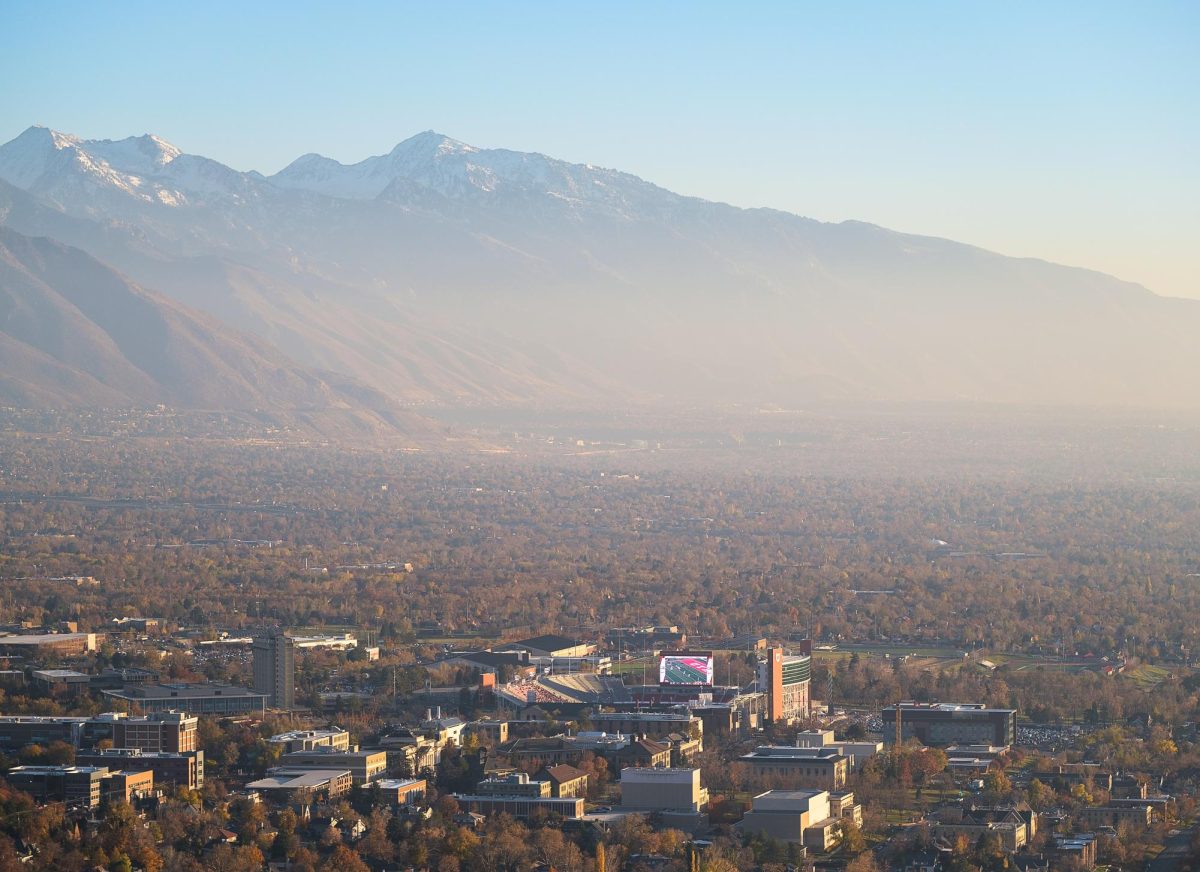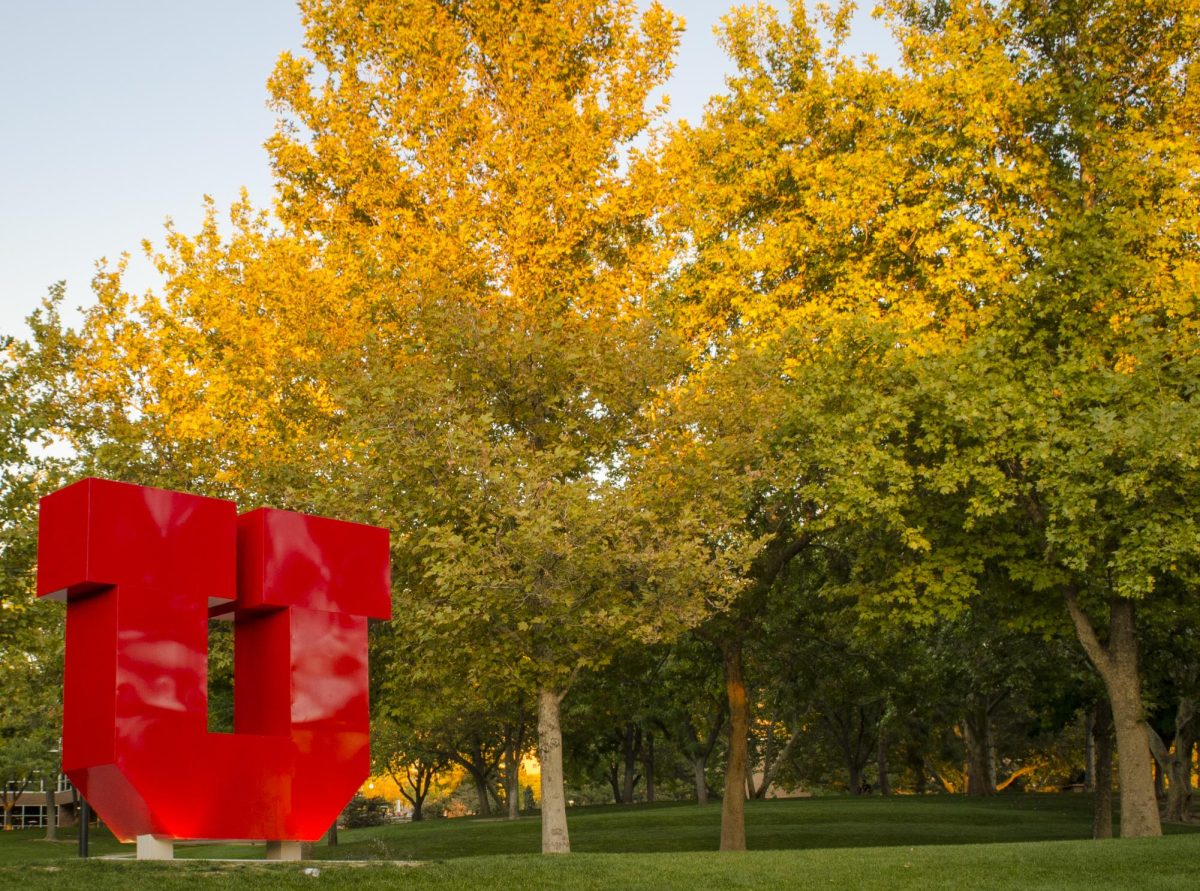Provo, Logan and Salt Lake City, Utah were each recently designated as nonattainment areas by the Environmental Protection Agency due to their consistently poor air quality.
The EPA determines non-attainment designation when an area repeatedly breaches the National Ambient Air Quality Standards. This happens when particles associated with smoke or other combustion products small enough to cause potential health risks are released into the air.
Bad air quality is not a new occurrence, and the University of Utah has joined efforts to combat air pollution using research and work done from different facilities in the Sustainability Office, according to Sam Jensen Augustine, director of Design and Construction at the U.
Augustine’s department helps manage the air quality permit — a regulatory measure required for pollution-producing organizations in Utah.
“By looking into specific measures, we are better able to comply with our quality permit,” Augustine said. “And that in turn improves the overall air quality in the valley.”
How is the U Combatting Pollution?
Augustine said the U’s focus around energy efficiency on campus has the goal of using less energy while maintaining the same comfort and performance.
“We are focusing on making the buildings as energy efficient as possible,” he said. “That means it costs less to operate, it produces less emissions, etc. We want to focus on that first as buildings are the main source of pollution, and then we will start looking at some of the supplements like renewable energy to offset that pollution as well.”
Lissa Larson is the associate director of Sustainability and Energy — a department focusing on utility, billing, metering and measuring as well as improving efficiency on campus. She said the U is living under the carbon-neutral commitment, which is a plan to reach net-zero carbon emissions by 2050. According to Larsen, this plan involves both a reduction of carbon emissions and a focus on improving air quality.
“When it comes to local air quality and reducing our carbon footprint, you can have the same cause to get both those impacts,” she said.
Larsen said the U is working towards this in two ways. The first is getting rid of energy-wasting resources that are linked with unnecessary emissions.
“Our primary thing that we are working towards is making buildings more energy efficient, using less natural gas and using less electricity,” she said.
The second strategy the U is implementing to reduce carbon emissions is through physical and virtual Power Purchase Agreements. A PPA is a contract an organization can make with an electricity generator, like a solar farm, to purchase energy for a set number of years. With a PPA, the U is able to reduce the need to a use power plant in Salt Lake City.
“We ask ourselves how to positively impact our local air quality by making sure we have projects online where we can purchase large swaths of energy,” Larsen said. “When those solar farms come online, they’re supplying power to our grid and thus reducing the need for a coal power plant here to turn on. We’re reducing the demand on less clean options here in the valley.”

How to Help Improve Air Quality in Utah
Augustine and Larsen both said the largest source of pollution in Salt Lake valley comes from personal transportation.
“If you look at what our air emission sources are, personal transportation is somewhere around 40%,” Larsen said. “It’s the largest piece of the pie. While the U can control emissions through organizational goals, personal transport is a lot harder to regulate.”
Larsen said an individual has a larger influence on pollution than they may think, and by taking public transport and cutting down on the number of trips they take, a clear change can be seen.
Additionally, Augustine recommended taking a legal approach to help improve air quality.
“You can lobby your legislators to enact higher standards for air quality,” he said. “One of the hardest things to do is regulate personal vehicle emissions because you have to regulate everyone. But every individual is contributing on that personal transportation pollution side. Lobbying for better legislation can make it easier to change personal transport habits.”
Air pollution and emissions are successfully being reduced through close focus on the root cause of the problem, Larsen said. While there is still a lot to improve on, reducing energy-wasting resources and carbon emissions, and cutting down on public transportation have proved successful in moving towards the carbon neutral by 2050 goal.




















Heidi • Feb 1, 2024 at 8:26 am
It is interesting that, in light of the known impact of personal vehicles on air quality, parking services moved from largely bike patrols to SUVs a few years back. Said SUVs often sit idling in parking lots waiting for class changeover so they can scan more license plates. Maybe they should look into more portable scanners that would work with bikes and/or smaller and lower emission vehicles.
John Hedberg • Feb 2, 2024 at 4:44 am
The U has a nuclear/power engineering major which might offer a more broad solution. 4th generation nuclear power is carbon-free, reputed safe, and can provide steady baseload 24 hours a day, unlike wind and solar. Build enough small modular reactors up and down I-15/I-80, and you might be able to use low consumption periods every day to make green hydrogen for FCV electric vehicles, which could considerably scrub the atmosphere (~40%, according to this article). Even semi’s can use hydrogen for medium/long-haul travel. Several US auto companies are already exploring commercial/residential Fuel Cell Vehicles.
I think Japan already uses them~ “Kaizen~!”